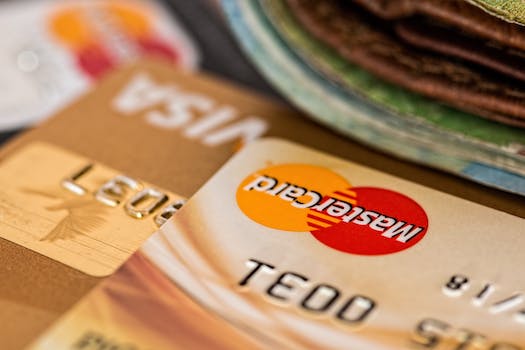How To Save Money Home
Introduction

Introduction: Saving money at home is an essential aspect of financial planning. It helps you to achieve your financial goals, pay off debts, and build a secure future. In this article, we will discuss some practical tips on how to save money at home. These tips are easy to implement and can help you to reduce your expenses and increase your savings.
5 Simple Ways to Reduce Your Home Energy Bills
Are you tired of paying high energy bills every month? Do you want to save money on your home energy costs? If so, you’re in luck! There are several simple ways to reduce your home energy bills and save money.
1. Install Energy-Efficient Appliances
One of the easiest ways to save money on your home energy bills is to install energy-efficient appliances. These appliances use less energy than traditional appliances, which means you’ll save money on your energy bills over time. Look for appliances with the ENERGY STAR label, which indicates that they meet strict energy efficiency guidelines set by the U.S. Environmental Protection Agency.
2. Use LED Light Bulbs
Another way to save money on your home energy bills is to use LED light bulbs. LED bulbs use up to 80% less energy than traditional incandescent bulbs, which means you’ll save money on your energy bills over time. Plus, LED bulbs last longer than traditional bulbs, so you won’t have to replace them as often.
3. Seal Air Leaks
Air leaks in your home can cause your energy bills to skyrocket. To reduce your energy costs, seal any air leaks in your home. This can be done by adding weatherstripping around doors and windows, sealing gaps around pipes and wires, and adding insulation to your attic and walls.
4. Use a Programmable Thermostat
A programmable thermostat can help you save money on your home energy bills by automatically adjusting the temperature in your home based on your schedule. For example, you can set the thermostat to lower the temperature when you’re away from home or asleep, and then raise it when you’re back home or awake. This can help you save money on your energy bills without sacrificing comfort.
5. Reduce Water Usage
Reducing your water usage can also help you save money on your home energy bills. Simple changes like taking shorter showers, fixing leaky faucets, and using a low-flow toilet can all help reduce your water usage and save you money on your energy bills.
In conclusion, there are several simple ways to reduce your home energy bills and save money. By installing energy-efficient appliances, using LED light bulbs, sealing air leaks, using a programmable thermostat, and reducing water usage, you can significantly reduce your energy costs over time. So why not start implementing these changes today and start saving money on your home energy bills? Your wallet (and the environment) will thank you!
DIY Home Repairs: Tips and Tricks to Save Money
Are you tired of spending a fortune on home repairs? Do you want to learn how to save money while still keeping your home in tip-top shape? Look no further! In this article, we will provide you with some DIY home repair tips and tricks that will help you save money and keep your home looking great.
First and foremost, it’s important to invest in some basic tools. Having the right tools on hand can save you a lot of money in the long run. Some essential tools include a hammer, screwdrivers, pliers, a wrench, and a tape measure. These tools can be used for a variety of tasks, from hanging pictures to fixing leaky faucets.
Next, it’s important to learn some basic DIY skills. There are plenty of resources available online that can teach you how to do simple repairs around your home. YouTube is a great place to start, as there are countless tutorials on everything from fixing a toilet to replacing a light fixture. By learning these skills, you can save money on labor costs and tackle small repairs on your own.
One of the most common home repairs is fixing a leaky faucet. This is a simple repair that can be done in just a few minutes. First, turn off the water supply to the faucet. Then, remove the handle and the nut that holds the cartridge in place. Replace the cartridge and reassemble the faucet. Voila! You’ve just saved yourself a costly plumber’s bill.
Another common repair is fixing a clogged drain. Instead of reaching for harsh chemicals, try using a plunger or a drain snake. These tools can help you clear out clogs without damaging your pipes. If you’re dealing with a particularly stubborn clog, try pouring boiling water down the drain or using a mixture of baking soda and vinegar.
If you’re looking to save money on energy costs, consider installing a programmable thermostat. This device allows you to set the temperature in your home based on your schedule. For example, you can set the thermostat to lower the temperature when you’re at work and raise it when you’re at home. This can help you save money on your heating and cooling bills without sacrificing comfort.
Finally, it’s important to stay on top of regular maintenance tasks. By keeping your home in good condition, you can prevent costly repairs down the line. Some tasks to keep in mind include cleaning your gutters, changing your air filters, and inspecting your roof for damage. By taking care of these tasks on a regular basis, you can save money and keep your home in great shape.
In conclusion, there are plenty of DIY home repair tips and tricks that can help you save money. By investing in some basic tools, learning some basic skills, and staying on top of regular maintenance tasks, you can keep your home in great shape without breaking the bank. So why not give it a try? Your wallet (and your home) will thank you.
How to Shop Smart for Home Essentials and Save Money
Are you tired of overspending on home essentials? Do you want to save money without sacrificing quality? Look no further! Here are some tips on how to shop smart for home essentials and save money.
Firstly, make a list of what you need before you go shopping. This will help you avoid impulse purchases and ensure that you only buy what you need. Stick to your list and resist the temptation to buy unnecessary items.
Secondly, compare prices before making a purchase. Check different stores and online retailers to see where you can get the best deal. Don’t forget to factor in shipping costs if you’re shopping online. You may also want to consider buying in bulk if it makes sense for your household.
Thirdly, consider buying generic or store-brand products instead of name-brand items. Often, these products are just as good as their more expensive counterparts. Don’t be swayed by fancy packaging or advertising – focus on the quality of the product itself.
Fourthly, take advantage of sales and discounts. Keep an eye out for flyers and coupons, and sign up for loyalty programs at your favourite stores. You may also want to consider shopping during off-peak times, such as weekdays or early mornings, when stores are less busy and may offer discounts to attract customers.
Fifthly, consider buying second-hand or refurbished items. You can often find great deals on furniture, appliances, and other home essentials at thrift stores, garage sales, and online marketplaces. Just be sure to inspect the item carefully before buying to ensure that it’s in good condition.
Sixthly, consider DIY projects instead of buying new items. For example, you can repurpose old furniture or make your own curtains instead of buying new ones. Not only will this save you money, but it can also be a fun and creative way to decorate your home.
Seventhly, don’t be afraid to negotiate. If you’re buying a big-ticket item, such as a mattress or a refrigerator, you may be able to negotiate a lower price. Do your research beforehand and be prepared to walk away if the seller isn’t willing to budge.
Finally, don’t forget to take care of the items you already have. Regular maintenance and cleaning can help extend the life of your appliances, furniture, and other home essentials. This will save you money in the long run by reducing the need for costly repairs or replacements.
In conclusion, there are many ways to shop smart for home essentials and save money. By making a list, comparing prices, buying generic, taking advantage of sales and discounts, considering second-hand or DIY options, negotiating, and taking care of what you already have, you can save money without sacrificing quality. Happy shopping!
The Benefits of Meal Planning and Grocery Budgeting
Are you tired of overspending on groceries every month? Do you find yourself throwing away expired food or ordering takeout because you don’t have anything to cook at home? If so, it’s time to start meal planning and grocery budgeting. Not only will it save you money, but it will also help you eat healthier and reduce food waste.
Meal planning is the process of deciding what meals you will eat for the week or month ahead. It involves creating a list of recipes, checking your pantry and fridge for ingredients, and making a grocery list. By planning your meals in advance, you can avoid impulse purchases and reduce the likelihood of food going to waste.
To start meal planning, choose a day of the week to sit down and plan out your meals. Look for recipes online or in cookbooks that use similar ingredients to save money. Consider incorporating leftovers into your meal plan to reduce waste and save time. Once you have your meals planned out, make a grocery list and stick to it when you go shopping.
Grocery budgeting is another important aspect of saving money on food. It involves setting a budget for how much you will spend on groceries each week or month and sticking to it. To create a grocery budget, look at your monthly income and expenses and determine how much you can realistically afford to spend on food.
When grocery shopping, look for sales and discounts on items you need. Consider buying generic or store-brand products instead of name-brand items to save money. Avoid buying pre-packaged or convenience foods, as they are often more expensive than making meals from scratch.
By meal planning and grocery budgeting, you can save money on food and reduce food waste. But the benefits don’t stop there. Eating at home also has health benefits, as you have more control over the ingredients and portion sizes in your meals. You can also experiment with new recipes and flavors, making mealtime more enjoyable.
In addition to meal planning and grocery budgeting, there are other ways to save money on food at home. Consider buying in bulk for items you use frequently, such as rice or pasta. Freeze leftovers for future meals or use them to create new dishes. Grow your own herbs or vegetables to save money on fresh produce.
In conclusion, meal planning and grocery budgeting are essential for saving money on food at home. By planning your meals in advance and sticking to a budget, you can avoid overspending and reduce food waste. Eating at home also has health benefits and allows for more creativity in the kitchen. So, start meal planning and grocery budgeting today and see the savings add up!
Creative Ways to Decorate Your Home on a Budget
Decorating your home can be a fun and exciting experience, but it can also be expensive. However, there are many creative ways to decorate your home on a budget. With a little bit of creativity and resourcefulness, you can transform your home into a beautiful and stylish space without breaking the bank.
One of the easiest ways to save money when decorating your home is to shop at thrift stores and garage sales. You can find some amazing pieces of furniture and decor at these places for a fraction of the cost of buying new. You can also repurpose old items and give them a new life. For example, you can turn an old ladder into a bookshelf or a vintage suitcase into a coffee table.
Another way to save money when decorating your home is to DIY. There are many DIY projects that you can do that are easy and affordable. For example, you can make your own curtains, throw pillows, and wall art. You can also paint old furniture to give it a new look. DIY projects not only save you money, but they also add a personal touch to your home.
When it comes to decorating your home on a budget, it’s important to prioritize. Focus on the areas of your home that are most important to you and that you spend the most time in. For example, if you love to cook, focus on decorating your kitchen. If you love to read, focus on decorating your living room with cozy chairs and bookshelves.
Another way to save money when decorating your home is to use what you already have. Look around your home and see if there are any items that you can repurpose or move to a different room. For example, you can use a dresser as a TV stand or move a rug from one room to another. By using what you already have, you can save money and create a new look in your home.
When shopping for decor, it’s important to be patient and wait for sales. Many stores have sales throughout the year, and you can save a lot of money by waiting for these sales. You can also sign up for email newsletters from your favorite stores to be notified of upcoming sales and promotions.
Finally, when decorating your home on a budget, it’s important to be creative and think outside the box. Don’t be afraid to mix and match different styles and colors. You can also use unconventional items as decor, such as old books, vintage cameras, and mason jars. By being creative, you can create a unique and stylish home without spending a lot of money.
In conclusion, decorating your home on a budget is possible with a little bit of creativity and resourcefulness. By shopping at thrift stores, DIYing, prioritizing, using what you already have, waiting for sales, and being creative, you can transform your home into a beautiful and stylish space without breaking the bank. So go ahead and start decorating your home on a budget today!
The Ultimate Guide to Couponing for Household Items
Are you tired of spending a fortune on household items? Do you want to save money without sacrificing quality? Look no further than couponing! Couponing is a great way to save money on everyday items, and with a little bit of effort, you can become a pro at it. Here’s the ultimate guide to couponing for household items.
First, start by collecting coupons. You can find coupons in newspapers, magazines, online, and even in-store. Make sure to check the expiration date and any restrictions before using them. It’s also a good idea to organize your coupons by category, such as food, cleaning supplies, and personal care items.
Next, plan your shopping trips around your coupons. Look for sales and promotions that match up with your coupons to maximize your savings. It’s also a good idea to stock up on items when they’re on sale and you have a coupon, so you don’t have to pay full price later.
Another tip is to sign up for loyalty programs and email newsletters from your favorite stores. They often send out exclusive coupons and promotions to their members. You can also follow your favorite brands on social media for special offers and discounts.
Don’t forget to use cashback apps and websites, such as Ibotta and Rakuten, to earn money back on your purchases. These apps offer cashback on specific items or a percentage of your total purchase. You can even stack your coupons with cashback offers for even more savings.
If you’re feeling adventurous, try stacking coupons. This means using multiple coupons on one item. For example, you can use a manufacturer coupon and a store coupon on the same item. Just make sure to read the fine print and follow any restrictions.
Finally, don’t be afraid to ask for a rain check if an item is out of stock. This means you can still get the sale price and use your coupon when the item is back in stock. It’s also a good idea to keep an eye out for clearance items, as they can often be combined with coupons for even more savings.
In conclusion, couponing is a great way to save money on household items. With a little bit of effort and planning, you can become a pro at it. Remember to collect coupons, plan your shopping trips, sign up for loyalty programs, use cashback apps, stack coupons, and ask for rain checks. Happy couponing!
Sustainable Living: Eco-Friendly Tips for Saving Money at Home
Saving money is a goal that many people strive for, and one of the best ways to achieve this is by making eco-friendly choices at home. Not only will these choices help you save money, but they will also benefit the environment. Here are some tips on how to save money at home while being eco-friendly.
Firstly, consider your energy usage. One of the biggest expenses in a household is energy bills, so it’s important to be mindful of how much energy you’re using. One way to do this is by switching to energy-efficient light bulbs. These bulbs use less energy and last longer than traditional bulbs, which means you’ll save money on your electricity bill in the long run. Another way to save energy is by turning off appliances and electronics when they’re not in use. Even when they’re in standby mode, they’re still using energy, so unplugging them can make a big difference.
Secondly, reduce your water usage. Water bills can also be a significant expense, so it’s important to be mindful of how much water you’re using. One way to do this is by fixing any leaks in your home. Even a small leak can waste a lot of water over time, which can add up on your bill. Another way to save water is by taking shorter showers and turning off the tap when you’re brushing your teeth. You can also install low-flow showerheads and faucets, which use less water without sacrificing water pressure.
Thirdly, consider your food choices. Eating a plant-based diet can be a great way to save money and reduce your carbon footprint. Meat and dairy products are often more expensive than plant-based alternatives, and they also require more resources to produce. By eating more fruits, vegetables, and grains, you can save money on your grocery bill and reduce your impact on the environment.
Fourthly, reduce your waste. One of the easiest ways to save money and be eco-friendly is by reducing the amount of waste you produce. This can be done by recycling, composting, and using reusable products. Instead of buying disposable products like paper towels and plastic bags, invest in reusable alternatives like cloth napkins and reusable shopping bags. You can also compost your food scraps and yard waste, which can be used to fertilize your garden.
Lastly, consider your transportation choices. Driving a car can be expensive, so consider alternative modes of transportation like biking, walking, or taking public transportation. Not only will this save you money on gas and maintenance, but it will also reduce your carbon footprint. If you do need to drive, consider carpooling or using a more fuel-efficient vehicle.
In conclusion, there are many ways to save money at home while being eco-friendly. By being mindful of your energy and water usage, food choices, waste production, and transportation choices, you can make a big difference in both your wallet and the environment. These small changes can add up over time, and you’ll be surprised at how much money you can save while also doing your part to protect the planet.
Conclusion
Conclusion: Saving money at home is an important aspect of financial planning. By following simple steps such as creating a budget, reducing energy consumption, and avoiding unnecessary expenses, individuals can save a significant amount of money over time. It is important to be disciplined and consistent in implementing these strategies to achieve long-term financial stability.







